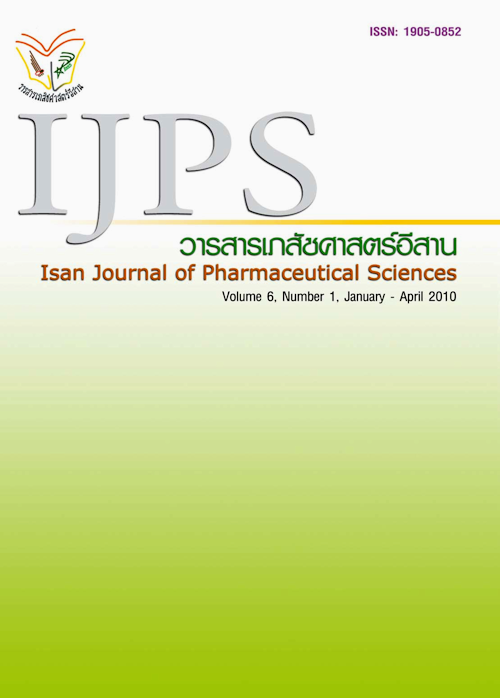Estimation of DNA Damages, Cytotoxicity and Antioxidant Status of Heavy Metals and Benzene among Petrol Workers in Baghdad-Iraq
Main Article Content
Abstract
This study was conducted to estimate the genetic damages and cytotoxicity of heavy metals (Zn, Cu,Pb) and benzene on the Al-Dorah refinery and petrol stations workers in Baghdad/Iraq. The results showed no significant differences (P 0.01) between the levels of these heavy metals in the serum of both groups and control. Lead (Pb) showed a significant level in the refinery workers serum (0.92±0.043 ppm). The toxicity of lead and benzene on workers was clearly seen in the genetic parameters used in this study. The mitotic index (MI), nuclear division cytotoxicity index (NDCI) and micronuclei (MN) were significantly high (8.02±0.32, 4.1±0.67, 10.63±2.63, respectively) in the exposed workers in the refinery workers and workers with a long exposed period (12.23±0.29, 6.2±0.95, 12.5±1.75, respectively). The results also showed a correlated increase between NDCI and binucleated ratio and between NDCI and MN where the NDCI increased with the increasing of binucleated cells percentage and mitotic index in the exposed groups indicating a double activity in the lymphocytes cell division and increasing in DNA damages. This made, these parameters are as a good indicators to estimate the genotoxicity in lymphocytes. Apoptotic and necrotic cells were also recorded in high numbers in the exposed groups. LDH and ALP enzymes were also detected in a high levels (P=0.01) in the exposed groups (387.73±34.00, 20.92±7.03, respectively). We conclude from these results that heavy metals and benzene have toxic and mutagenic effects upon petrol workers especially those with long period exposure.
Article Details
In the case that some parts are used by others The author must Confirm that obtaining permission to use some of the original authors. And must attach evidence That the permission has been included
References
Abdullull-Wahab SA. Source characterization of atmospheric heavy metals in industrial residential areas: A case study in Oman. J Air Waste Manag Assoc 2004. 54(4): 425-31.
Anetor JI, Adelaja O, Adekunle AO. Serum micronutrient levels, nucleic acid metabolism antioxidant defenses in pregnant Nigerians: Implications for fetal and maternal health. 2003. AfrJ Med Med Sci 32(3): 257- 62.
Bachanek T, Staroslawska E, Wolanska E, Jarmolinska K. Heavy metal poisoning in glass worker characterized by severe. Ann Agric Enviro Med 2000. 7(1): 51-3.
Bloemen LJ , Youk A, Bradly TD, Bodner KM, Marsh G. Lympho-haematopoietic cancer risk among chemical workers exposed to benzene. Occup Environ Med 2004. 61(3): 270-74.
Carletti R, Romano D. Assessing health risk from benzene pollution in an urban area. Environ Monit Assess 2002. 80.135-48.
Decker T, Lohmann-Matthes ML. A quick and simple method for the quantitation of lactate dehydrogenase release in measurements of cellular cytotoxicity and tumor necrosis factor (TNF) activity. J Immunol Methods 1988.115(1): 61›9.
Eastmond DA, Schuler M, Franz CH, et al. Charactrerization and mechanisms of chromosomal aberrations induced by benzene in mice and humans. Res Rep Health Eff Ints 2001.103: 69-80.
Fairhurst S. Hazard and risk assessment of industrial chemicals in the occupational context in Europe. Food Chem Toxicol 2003. 41(11): 1453-62.
Fenech M. The in vitro micronucleus technique. Mutat Res 2000. 455(1-2): 81-95.
Guallar E, Sanz-Gallardo MI, Vanût Veer P, et al. Heavy Metals and Myocardial Infarction Study Group. Mercury, fish oils, and the risk of myocardial infarction. N Engl J Med 2002. 347(22): 1747-54.
Hayes RB, Songnian Y, Dosemeci M, Linet M. Benzene and lymphohematopoietic malignancies in humans. Am J Ind Med 2001. 40(2): 117-26.
Hope RM. Human serum alkaline phosphatase variants and their association with the ABO blood groups in Australian sample. AustralianJ Exper Biol Med Sci 1966. 44(3): 323-6.
Kalnas J, Teitelbaum D: Dermal absorption of benzene: implications for work practies and regulations. Int J Occup Environ Health 2000. 6:(2): 114-21.
Khanzode SS, Muddeshwar MG, Khanzode SD, Dakhale GN. Antioxidant enzymes and lipid peroxidation in different stage of breast cancer. Free Radic Res 2004. 38: 81-6.
Kim YJ, ChoY H, Pack D, Chung HW. Determination of chromosome aberrations in workers in a petroleum refining factory. J Toxicol Environ Health 2004. 67(A): 1915-22.
KirschVolders M, Sofuni T, Aardema M, et al. Report from the in vitro micronucleus assay working group. Mutat Res 2003. 540(2): 153-63.
Kopstein M. Potential Uses of Petrochemical Products Can Result in Significant Benzene Exposures: MSDSs Must List Benzene as an Ingredient. J Occup Environ Hygiene 2006. 3(1): 1-8.
Lebailly P, Willett EV, Moorman AV, Roman E, Cartwright R, Morgan GJ, Wild CP. Genetic polymorphisms in microsomal epoxide hydrolase and susceptibility to adult acute myeloid leukaemia with defined cytogenetic abnormalities. Brit J Haematol 2002. 116: 587-94.
Lidsky TI, Schneider JS. Lead neurotoxicity in children: basic mechanisms and clinical correlates. Brain 2003. 126(1): 5-19.
Mortada WI, Sobh MA, El-Defrawy MM, Farahat SE. Study of lead exposure from automobile exhaust as a risk for nephrotoxicity among traffic policemen. Am J Nephro 2001. 21(4): 274-9.
Smith MT, Zhang L, Jeng M, et al. Hydroquinone, a benzene metabolite, increases the level of aneusomy of chromosomes 7 and 8 in human CD34-positive blood progenitor cells. Carcinogenesis 2002. 21(8): 1485-90.
WHO. Arsenic and Arsenic Compounds. Environmental Health Criteria 224 Geneva: World Health Organization, 2001.
Winn LM. Homologous recombination initiated by benzene metabolites: A potential role of oxidative stress. Toxicol Sci 2003. 72(1): 143-9.
Yadav JS, Seth N. Cytogenetical damage in petrol pump workers. IJHG 2001. 1(2): 145-50.
Yaris F, Dikici M, Akbulut T, Yaris E, Sabuncu H. Story of benzene and leukaemia: Epidemiologic approach of Muzaffer Akosy. J Occup Health 2004. 46(3): 244-47


